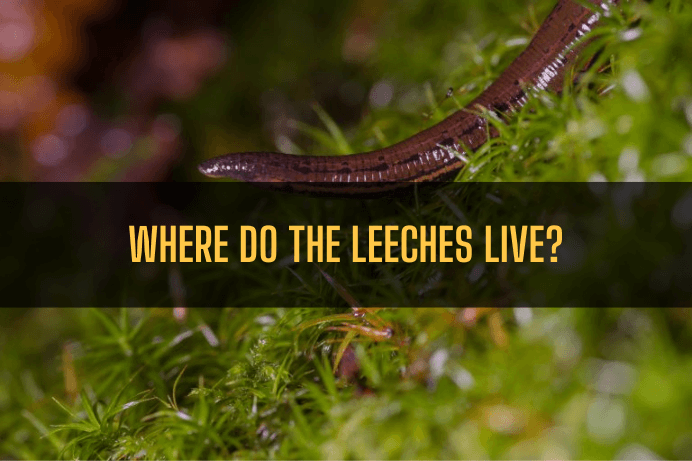Where do the Leeches live? Modern research

Do you have a sentinel nature? Then you must have thought to explore deep in the wild forest of another continent if you nodded yes! Then trust me, this article will bring a lot to the table.
Hypothetical explanation

Before diving into details, let’s assume a situation to grab the point quickly; as you are hiking in the mountains and cutting the way through the bush using a machete, around you, the air is abuzz with the fascinating sounds of birds and monkeys.
You are drenched in sweat due to the sun’s scorching rays while hiking; you cut through a reed fence to get a great pond of appealing water. You would put your tools aside and, without hesitation, get into the ready oasis.
Once you dive into that ready oasis, firstly, that water will reduce the burning sensation of the sun and relief your scorching skin, although your skin quickly starts to tingle and feel hot as if something is biting your skin.
You quickly emerge from the water to figure out you are wrapped with numerous worm-like livestock clinging to your body and feasting your blood.
Structure of leeches
Wait! What’s that? The tiny vampires? Not at all; these are called Leeches. These creatures are called leeches, have suction cups on each end of their bodies, and have a flat, vast bodies with segmented segments. Sponges are typically dark brown, green, or black, but they can also have spots and stripes or be completely plain.
Size of leeches

There is a different range of sizes from 0 inch to 10 Inch length. The types of sponges that consume the blood of humans, animals, and fish do possess sharp teeth.
Habitat of Leeches
Leeches are unfortunately not just found in remote jungles halfway across the world. You can find hundreds of species of sponges found worldwide except Antarctica; several species of barnacles are located in the ocean, beaches, coasts, and damp areas of the soil.
Where do Leeches live?
But most leeches used to live in the shallow depth of fresh water, and if you find yourself attached to a sponge after swimming, don’t get panic and try to keep calm because, according to modern scientific research, usually, a leech bite is not dangerous.
But usually, the saliva of the leeches can develop a mild infection. However, I haven’t seen any permanent reaction due to leech bites because they cannot even suck much more to harm Homo Sapiens.
What does Modern science prefer about Leeches?
In fact, according to recent research, it has proven scientifically leech bite is quite beneficial. Since ancient India and Greece, doctors have used leeches to treat human illnesses. Sponges were once thought to be able to remove “bad blood” from a sick body by doctors.
Bloodletting (A scientific procedure)
Bloodletting was no longer a common medical practice hundreds of years ago. But in contemporary medicine, leeches have claimed a new position of honor.
Fact about Leeches
Leeches release an anti-coagulant during blood sucking, as modern scientists have discovered. This chemical aids in promoting blood flow and preventing blood clotting.
How helpful is the surgical field?

Leeches have proven helpful in complex surgeries, including skin grafting, plastic surgery, and the reattachment of body parts to maintain blood flow to peaceful places following surgery and prevent clotting.
Many of these surgeries would not succeed without leeches because of blood clots and restricted blood flow following surgery.

